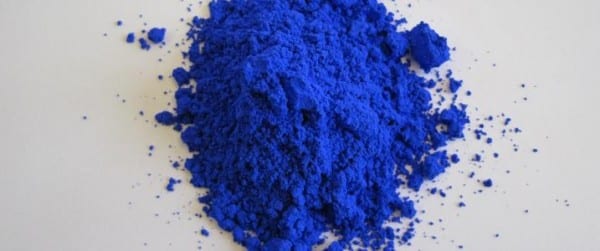YOU CAN ALWAYS USE ANOTHER BRILLIANT BLUE: Oregon State University researchers have discovered a new pigment. As is often the case, it happened by accident.
From the press release:
OSU chemist Mas Subramanian and his team were experimenting with new materials that could be used in electronics applications and they mixed manganese oxide – which is black in color – with other chemicals and heated them in a furnace to nearly 2,000 degrees Fahrenheit. One of their samples turned out to be a vivid blue. Oregon State graduate student Andrew Smith initially made these samples to study their electrical properties.
“It was serendipity, actually; a happy, accidental discovery,” Subramanian said.
The new pigment is formed by a unique crystal structure that allows the manganese ions to absorb red and green wavelengths of light, while only reflecting blue. The vibrant blue is so durable, and its compounds are so stable – even in oil and water – that the color does not fade.
“This new blue pigment is a sign that there are new pigments to be discovered in the inorganic pigments family,” said Geoffrey T. Peake, research and development manager for The Shepherd Color Company.
During the Renaissance, vivid blue ultramarine pigments, often used for painting the Virgin Mary’s cloak, were worth five times their weight in gold. In 1704, another accidental chemical discovery, of what became known as Prussian blue, made less expensive synthetic true blues available. For a video on how that changed painting, go here.
Progress in chemistry is seriously underreported, but that doesn’t mean it isn’t going on all the time. (The OSU press release is from May, but if it’s new to you…)

